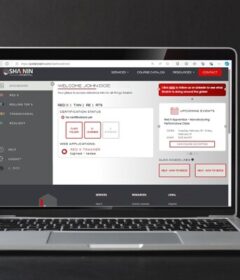The US Government Still Uses Outdated Tech to Track Business Tax

Tax season is now, and the people of the United States have until 18 April to complete their paperwork in order to avoid penalties and late fees. The United States Department of Justice has issued a communique stating that “U.S. taxpayers are subject to tax on worldwide income from all sources and must report all taxable income and pay taxes according to the Internal Revenue Code. Taxpayers found to be committing fraud may be subject to penalties including payment of taxes owed plus interest, fines, and jail time.”
The United States Treasury Department uses a decades-old programming language called assembly language code. The coding is used for the maintenance of Individual Master Files, the data source for taxes, refunds, and other updates– the technology is being used to track business taxes as well.
Updating Systems Technology
Tax data for individual business income is tracked and recorded in the Treasury’s Business Master File, which is written in assembly language code—while operating on an IBM mainframe, a large computer that most likely has less power than most smartphones today. According to report notes, the code is both difficult to write and maintain.
The United States Government Accountability office addressed the issue, stating that the IRS relies heavily on information technology for the processing of tax returns, collecting taxes, distributing tax refunds, and carrying out numerous other services for taxpayers. In the 2020 fiscal year, the IRS spent approximately $2.8 billion to maintain and improve its IT systems. The government also said that the IRS had taken steps to modernize IT systems to improve both internal processes and services to taxpayers.
The IRS has reported that taxpayers should expect a more modern system that would “eventually provide real-time digital taxpayer interactions and rapid access to data for enhanced customer service. A 2030 retirement for the IMF means that taxpayers will have to wait until then to fully reap the benefits of a modern system, including faster service from the IRS.”
Business Taxation in the United States
The United States imposes a tax on the earnings of US resident businesses at a rate of 21 percent. A number that was reduced from 35 percent by the 2017 Tax Cuts and Jobs Act. However, corporate income tax rose by $230.2 billion in the 2019 fiscal year, accounting for 6.6 percent of all federal revenue, a decrease from 9 percent in 2017.However, in the case of an LLC, the taxation will defer. This is due to the business structure benefiting from pass-through taxation– meaning that there is no business taxation, and members will therefore only be taxed on their individual income. Since individual income tax is determined by each state, the amount of tax payable- if any- will depend on the location of incorporation. In California, for instance, income tax rates can range from 1% to 12.3%. The LLC California cost is also lower than forming a corporation in the state.
Other costs that entrepreneurs should also pay attention to are:
● Filing fees- Charge of filing Articles of Organization with the Secretary of State.
● Statement of Information Fee- Cost of a biennial report with the Secretary of State.
● Annual Taxation- Some states require all LLCs that do business in the state to pay an annual tax.
● Initial Report Fee- Business owners may have to file an initial report with the Secretary of State, usually within 90 days from the date of registration.
● Registered Agent Fee– Registered agents are required for all businesses in the U.S that have filed with the state.
Final Thoughts
With the surge of new businesses and tax season in full swing, the U.S government has its hands full. While the outdated technology might be functional and gets the job done, there needs to be an upgrade in order to keep up with the constant advancements in technology which will ideally streamline the filing processes. This will prove beneficial to both taxpayers and the government.



